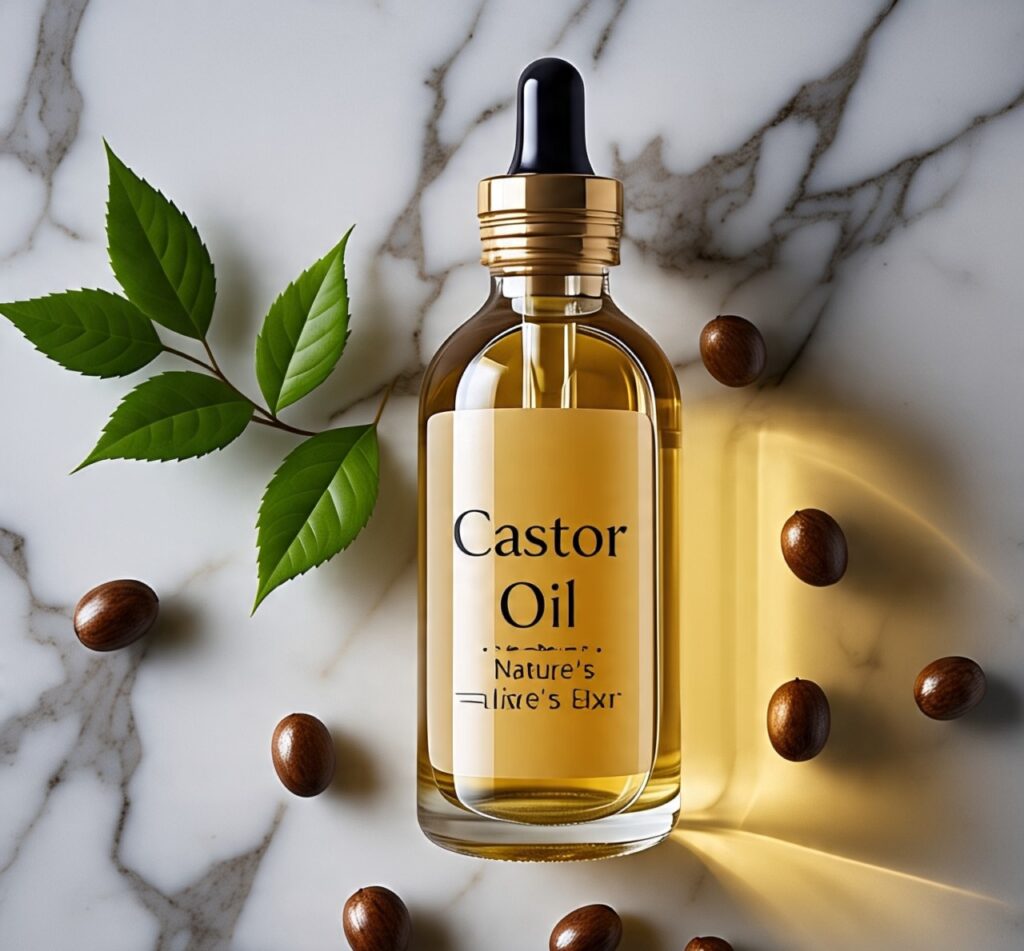
When you think of natural remedies passed down through generations, castor oil inevitably makes the list. From grandmothers’ home cabinets to modern skincare and industrial labs, castor oil has carved a niche for itself thanks to its versatility and potency. But what exactly makes it so special?
Let’s explore the fascinating world of castor oil — its types, benefits, how to use it safely, and how to choose the right one for your needs.
What is Castor Oil?
Castor oil is a thick, pale-yellow oil extracted from the seeds of the Ricinus communis plant. Despite its somewhat sticky consistency, it’s rich in ricinoleic acid, a fatty acid that gives it powerful anti-inflammatory and antimicrobial properties.
Used in Ayurvedic medicine, industrial manufacturing, and cosmetic products, castor oil is one of those rare oils that bridges the gap between home remedies and heavy-duty industry solutions.
Types of Castor Oil: From Home to Heavy-Duty
Understanding the different varieties of castor oil helps you pick the right one for your intended use:
| Type | Appearance | Best Used For |
|---|---|---|
| Cold-Pressed Castor Oil | Pale yellow, viscous | Skin, hair care, medicinal purposes |
| Jamaican Black Castor Oil | Dark brown, roasted scent | Hair growth, scalp treatment |
| Hydrogenated Castor Oil (a.k.a. Castor Wax) | White, solid | Cosmetics, polishes, lubricants |
| Industrial Grade Castor Oil | Slightly darker, processed | Paints, coatings, plastics, lubricants |
Note: Always read labels carefully. Industrial-grade castor oil is not safe for personal care or consumption.
How to Identify Good Quality Castor Oil
With the market flooded with options, here are a few ways to ensure you’re getting pure, effective castor oil:
- Check the extraction method: Cold-pressed is ideal for skincare and haircare.
- Avoid additives: Opt for 100% pure, hexane-free castor oil.
- Packaging matters: Dark glass bottles preserve the oil better.
- Smell & texture: High-quality oil is thick, smooth, and has a mild, earthy aroma.
Nutritional Value of Castor Oil (When Consumable)
Castor oil is occasionally used as a laxative in controlled medical settings. Here’s its nutritional snapshot per 1 tablespoon (14g):
| Nutrient | Amount |
| Calories | 120 |
| Fat | 14g (mainly ricinoleic acid) |
| Protein | 0g |
| Carbs | 0g |
⚠️ Warning: Never consume castor oil unless directed by a healthcare provider. It can cause severe diarrhea and dehydration if misused.
Health & Beauty Benefits of Castor Oil
Castor oil packs a punch when it comes to holistic wellness. Here’s how:
✅ Skin Benefits
- Deep moisturizer: Ideal for dry skin, especially elbows and heels.
- Fights acne: Antibacterial properties help clear clogged pores.
- Soothes sunburn and rashes: Calms inflammation naturally.
✅ Hair & Scalp
- Stimulates hair growth: Massaging into the scalp boosts circulation.
- Treats dandruff: Its antifungal properties keep the scalp healthy.
- Strengthens strands: Adds shine and reduces breakage.
✅ Joint & Muscle Relief
- Anti-inflammatory: Helps with arthritis and sore muscles when used with warm compresses.
Industrial Uses of Castor Oil
Beyond personal care, castor oil is a vital ingredient in many industrial products:
- Bio-based plastics & lubricants
- Paints, coatings, and dyes
- Brake fluids and engine oils
- Polishes and waxes
Its high viscosity and lubrication properties make it invaluable in sectors pushing for eco-friendly alternatives.
How to Use Castor Oil Effectively
For Hair
- DIY Hair Mask: Mix 2 tbsp castor oil with 1 tbsp coconut oil. Warm slightly and massage into the scalp. Leave for 1-2 hours or overnight. Wash with shampoo.
For Skin
- Overnight Treatment: Apply a few drops to clean skin before bed.
- Spot Treatment: Dab a small amount on acne or blemishes with a cotton swab.
For Constipation Relief
- Dosage: 1-2 teaspoons for adults (only under medical supervision). Effects begin in 2-6 hours.
How Much Castor Oil to Use
- Hair Growth: 1-2 tablespoons per application, once or twice a week.
- Skin Moisturizer: Just a few drops — it spreads easily.
- Joint Pain Relief: Enough to coat the area; use a warm compress for best results.
- Laxative (medical only): Typically 15 ml (1 tbsp), never exceed recommended doses.
Disadvantages & Safety Concerns
While castor oil is generally safe for external use, here are some caveats:
⚠ Topical Risks:
- May cause skin irritation or rashes in sensitive individuals.
- Always do a patch test before using extensively.
⚠ Internal Risks:
- Can cause cramps, diarrhea, and electrolyte imbalance if consumed excessively.
- Not safe for children or pregnant women without medical advice.
Real Experiences: My Castor Oil Journey
Years ago, I struggled with thinning hair and tried every serum on the shelf. A friend recommended Jamaican Black Castor Oil. Skeptical at first, I started applying it weekly. Within two months, baby hairs lined my scalp, and my hair felt denser. Since then, it’s become a staple in my routine.
Another win? During winter, a few drops of castor oil saved my cracked heels overnight. It’s thick, yes, but the results are undeniable.
Final Thoughts: Is Castor Oil Right for You?
Whether you’re looking to grow your hair, soothe dry skin, or explore sustainable alternatives in industry, castor oil has something to offer. It’s natural, potent, and time-tested.
However, use it wisely. Always test it, read labels, and avoid ingesting it unless directed by a doctor.
✅ Quick Recap
| Use | How to Apply | Frequency |
| Hair Growth | Scalp massage + hair mask | 1-2x/week |
| Skin Moisturizer | Apply overnight | Daily or as needed |
| Constipation | 1-2 tsp orally | Under medical supervision only |
| Joint Relief | Warm compress over oil | As needed |
What’s Next?
Liked this guide on castor oil? Don’t stop here:
- Explore natural oils for skincare
- Check out DIY home remedies for hair growth
- Sign up for our newsletter for weekly wellness tips!
Have you tried castor oil? Share your story or questions below!



